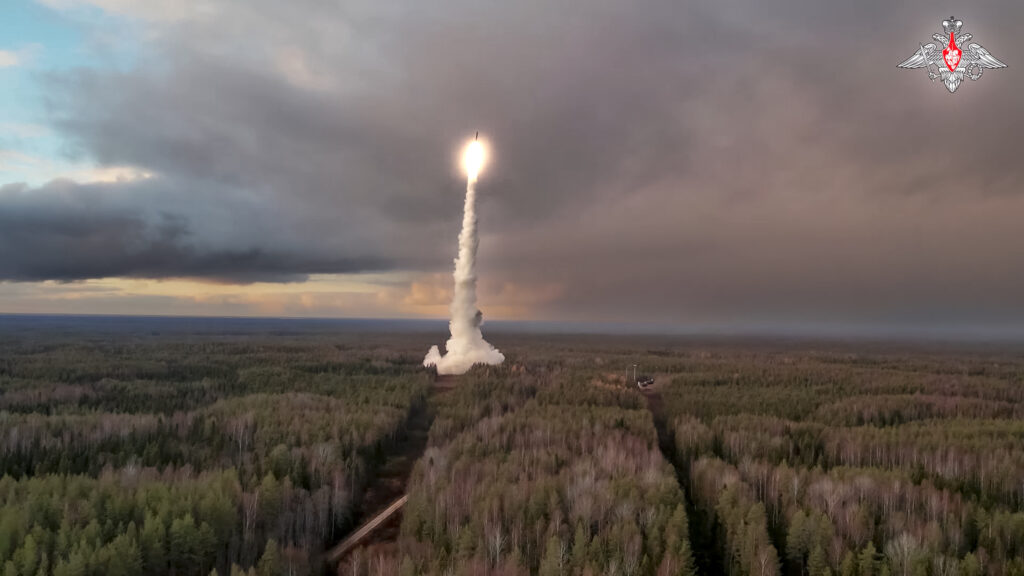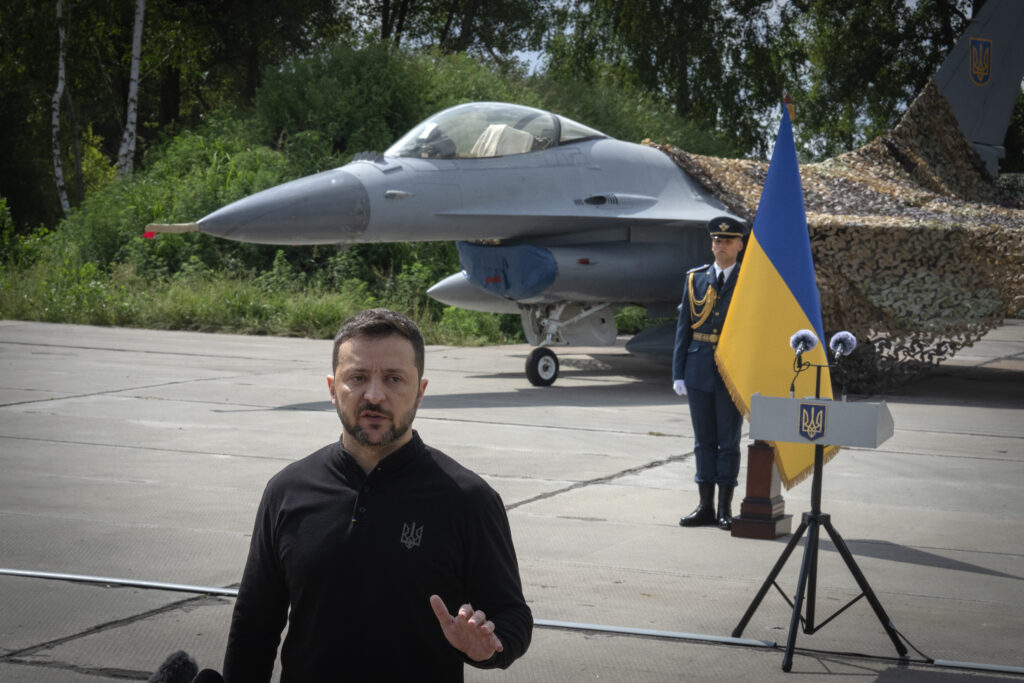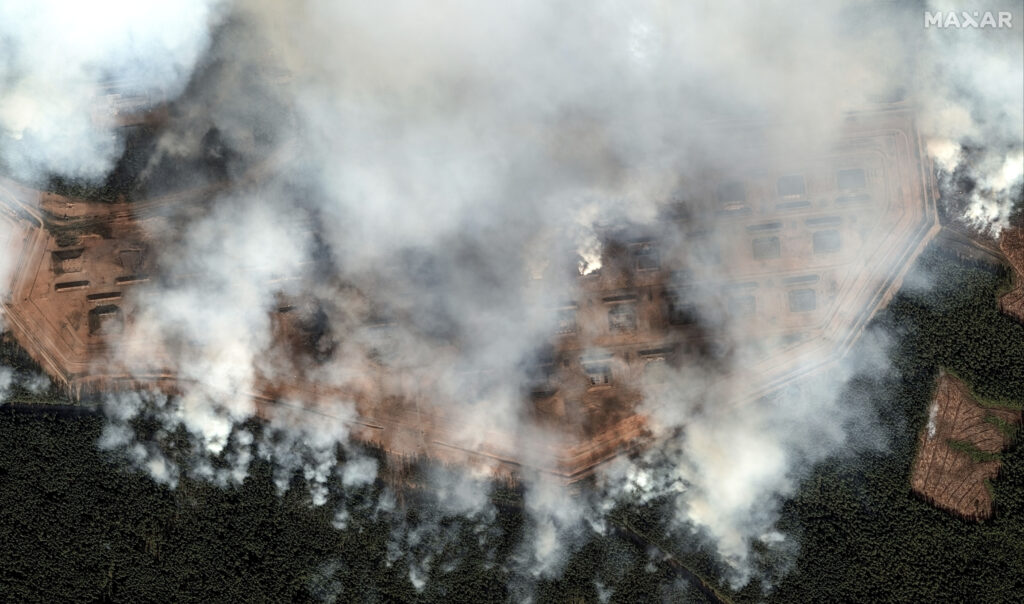Russia Flexing Its Nuclear Muscles Seen as Nothing More Than Kabuki Without Satellites Detecting Real Preparations
The theatrics are clearly meant to warn America’s next president not to mess with Putin.

With an eye to Americans voting next Tuesday, President Putin is seeking to impress on America his nuclear might. By conducting a nationwide drill, firing nuclear capable rockets from land, sea and air, he clearly wants to show America’s next administration that there will be a price for messing with Russia.
However, after years of nuclear bluffs in its war against Ukraine, the Kremlin is, in the words of one Western analyst, increasingly “getting tangled in its red lines.”
Yesterday’s drill showed “strategic offensive forces launching a massive nuclear strike in response to a nuclear strike by the enemy, ” said Defense Minister Andrei Belousov. His ministry assured that all missiles reached their designated targets. Until five months ago, Mr. Belousov was a prominent economic official.
Time and again since February 2022, the Kremlin’s nuclear threats have given the West pause. Just last month at the United Nations in New York, Foreign Minister Sergei Lavrov warned against “trying to fight to victory with a nuclear power.”

However, ultimately, the red lines were ignored, and Washington delivered F-16 fighter jets, M-1 Abrams battle tanks, and tactical cruise missiles.
Without satellites detecting real preparations for nuclear use, threats are generally seen as kabuki. They also are undermined by the increasingly poor performance of Russia’s Soviet-era military equipment.
“Since the start of the full-scale invasion, the Ukrainian military has liberated entire regions claimed by the Kremlin, sunk or damaged around one-third of the Russian Black Sea Fleet, and conducted a comprehensive bombing campaign of Russian military and energy infrastructure, all without provoking a nuclear response,” the editor of the Atlantic Council’s “Ukraine Alert,” Peter Dickinson, writes.

“In August 2024, Ukraine crossed the reddest of all Russian red lines by invading Russia itself,” Mr. Dickinson adds. “Rather than reaching for his nuclear briefcase, Putin chose to downplay the invasion.”
This time, the Kremlin wants to dissuade President Biden from allowing the Ukrainians to use American-made tactical cruise missiles to hit Russian targets “deep” inside Russia, less than 190 miles from the Ukrainian border.
The argument is to some extent moot as the Ukrainians already use these highly precise missiles to hit targets in Ukrainian areas that Russia claims as sovereign territory — Crimea and most of the Donbas.
Meanwhile, Ukraine uses its home-made long range drones to hit targets as far as 1,000 miles east of Ukraine. Although a drone packs far less of a punch than a cruise missile, they bring the war home to Russians.

Yesterday, a Ukrainian drone flew 800 miles east to set ablaze a building of the Russian Special Forces University in Chechnya. Reacting to the first attack on Chechnya in the war, Chechen leader Ramzan Kadyrov raged: “They have bitten us. We will destroy them.”
Russia’s nuclear weapons drill also coincided with the arrival of about 10,000 North Korean soldiers in Russia. Yesterday, the first 3,000 reportedly took up positions in Kursk, the region where Ukrainian soldiers have occupied a pocket of Russian territory since August. Mr. Putin could be hoping that the nuclear drill will distract from the fact that he cannot find enough men among his population of 144 million to liberate Russian land.
The nuclear drill sends a signal to the North Atlantic Treaty Organization and the West to accept the arrival of North Korean mercenaries in his war. On Monday, Secretary General Mark Rutte of NATO described the arrival of 10,000 North Korean soldiers as “a significant escalation.” Yesterday at Washington, President Biden was asked if Ukraine should strike back. Biden replied of the North Koreans: “If they cross into Ukraine, yes.”
In Moscow, hosts on state TV talk shows routinely propose dropping nuclear bombs on London, Paris, Berlin or Warsaw. However, Western analysts are cautious about dismissing all of Russia’s nuclear saber rattling as a bluff.
Earlier this month, Bob Woodward’s new book, “War,” reported that six months into Russia’s attack on Ukraine, Washington had intelligence pointing to “highly sensitive, credible conversations inside the Kremlin” that Mr. Putin was considering using nuclear weapons.
With 30,000 Russian soldiers in danger of encirclement in Ukraine’s southern Kherson region, American intelligence warned that there was a 50-50 chance that Russia would use tactical nukes, Mr. Woodward reported.
Biden administration officials reportedly worked the phones to dissuade their counterparts in Moscow. More importantly, Mr. Biden called Xi Jinping, the Chinese Communist Party boss. In November 2022, the two leaders met and publicly declared that “a nuclear war should never be fought.”
There also are doubts about the reliability of Russia’s nuclear arsenal and delivery systems. Last month, Russia’s latest model intercontinental ballistic missile, “Satan 2,” blew up at the Plesetsk cosmodrome. The explosion gouged a 200-feet wide crater, flattened trees, and set off a fire picked up by NASA satellites. Under development for a decade, the rocket, formally called the R-28 Sarmat, has suffered four launch failures.
“The failure of such a pivotal system, especially in the context of Russia’s ongoing war in Ukraine, reveals critical vulnerabilities in Russia’s military apparatus,” defense analyst Doug Livermore writes for the Washington-based Center for European Policy Analysis. “This weakens Russia’s ability to credibly threaten nuclear strikes, particularly as it seeks to discourage continuing support to Ukraine.”
In general, Russia’s military technology lags behind the West. On Saturday, Iran’s Russian-made S-300 anti aircraft missiles failed to hit a single one of the more than 100 Israeli war jets that attacked Iran. On the other hand, the Israelis reportedly knocked out all three of Iran’s S-300 air defense batteries.
Ukraine’s defense ministry reports that since the Russian attack of February 2022, Ukraine has shot down 369 Russian fighter bombers and 2,625 Russian cruise missiles. That is more than three times the number of Soviet war jets shot down during the decade-long Soviet Union’s occupation of Afghanistan.

